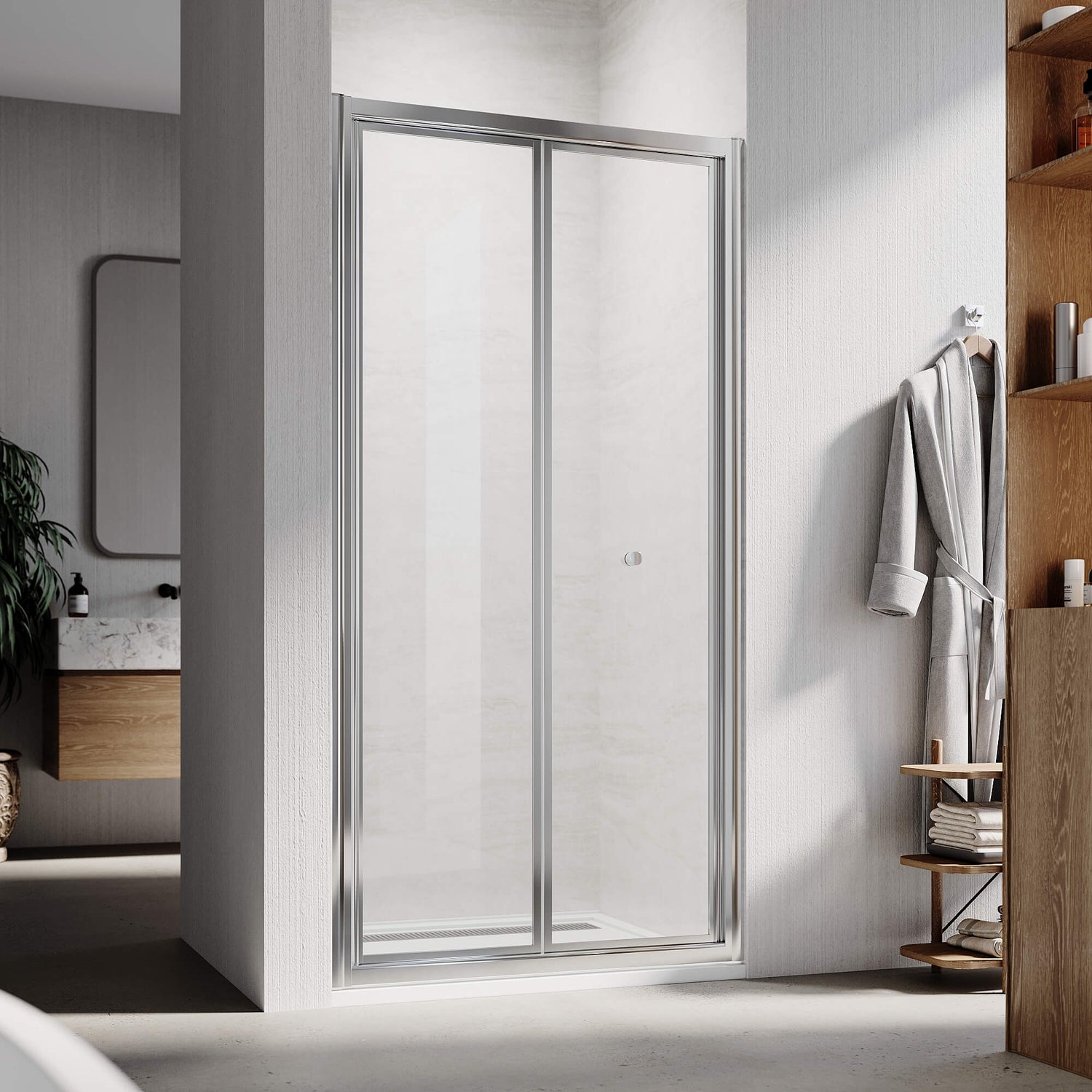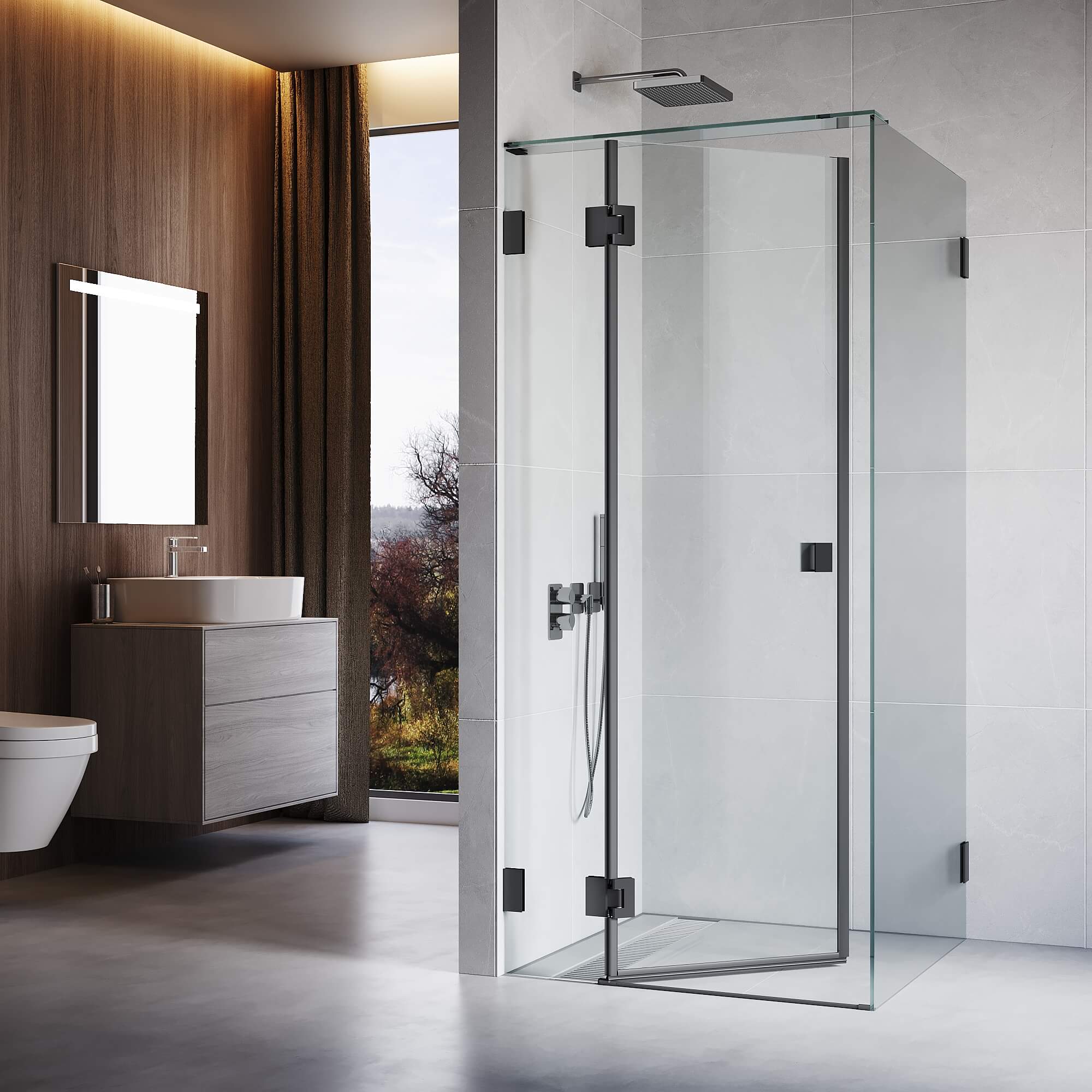Imagine stepping out of the shower only to find a messy puddle spreading across the bathroom floor. Not only is it annoying to clean, but it can lead to mould growth, slippery tiles, and even long-term water damage. These issues are often caused by a worn or damaged shower door seal.
A properly fitted seal is much more than just a strip of rubber or plastic, it’s the invisible barrier that keeps your bathroom dry, safe, and hygienic. It prevents leaks, blocks cold drafts, reduces mould growth, and even contributes to the energy efficiency of your space.
In this comprehensive Australian guide, we’ll cover everything you need to know about shower door replacement seals in Australia. You’ll learn how to identify the type of seal your shower uses, measure it correctly, choose the best replacement from local suppliers, and install it yourself with confidence.
Identifying Your Shower Door Seal Type for Effective Replacement
Before replacing your shower seal, the first, and most crucial, step is figuring out exactly what type you have. Shower seals come in different profiles and attachment methods and using the wrong one can leave you with the same leaky problem you started with.
Common Shower Seal Profiles in Australia
Australian bathrooms commonly use several types of seals, each serving a particular purpose:
· U-Channel or H-Channel Seals
These clip directly onto the glass edges. The U-shaped version grips one edge of the glass, while H-channel seals sit between two glass panels, creating a watertight joint. These seals are very common in framed or semi-frameless screens.
· Magnetic Shower Door Seals
Often used on closing edges of shower doors, these incorporate magnets that snap together for a tight, seamless closure. They are perfect for reducing gaps where water might escape.
· Bulb or Tube Seals
These consist of a flexible tube (bulb) that compresses against the shower frame or wall. The bulb fills in small irregularities to form a waterproof barrier.
· Shower Door Bottom Sweeps
Attached to the base of the door, these are either finned or brush-like strips that sweep over the floor or base of the shower tray, stopping water leakage at the bottom.
· Peel-and-Stick Seals
A quick DIY fix, these adhesive-backed seals are easy to apply but typically less durable than clip-on or magnetic options. They’re useful for renters or as temporary solutions.
How to Identify Your Existing Seal
If you’re unsure which seal you need, follow these simple steps:
1. Take a Close-Up Photo – Photograph the edge or bottom of your shower door. A cross-sectional view of the seal helps identify its profile.
2. Check How It Attaches – Look closely: Does it clip onto the glass, stick with adhesive, or screw to the frame?
3. Look for Printed Codes or Brands – Some seals have small manufacturer codes printed on them.
4. Compare the Shape – Match the profile of your seal against common Australian shower seals seen in store catalogues or online retailer charts.
By correctly identifying your shower seal type, you avoid ordering the wrong profile and ensure a snug replacement fit.

How to Measure Your Shower Door Seal for a Perfect Australian Replacement
Identifying the profile is only half the job, the next step is precise measurement. Getting the dimensions wrong is the number one reason for ill-fitting shower seals.
Measuring the Length
· For Side Seals: Measure the entire vertical length of the door edge where the seal fits.
· For Bottom Sweeps: Measure across the full width of the door.
· Tip: Always measure twice before ordering, this reduces the chance of costly mistakes.
Measuring the Thickness and Width
· Glass Thickness: Shower enclosures in Australia typically use glass between 4mm and 10mm thick. Check the edge of the glass pane; some have the thickness etched on. Otherwise, use a calliper or ruler for accuracy.
· Seal Profile Width: Measure the diameter of bulb seals or the width of U- and H-channel openings.
Remember, even a 1mm difference can make a seal either too loose or impossible to fit. Precision here saves frustration later.
Where to Buy Shower Door Replacement Seals in Australia: A Buyer’s Guide
Now that you’ve identified and measured your seal, the next step is purchasing a suitable replacement.
Material Matters: Choosing the Right Type
The performance of your new seal depends heavily on the material:
· PVC (Polyvinyl Chloride)
Affordable, widely available, flexible, but less resistant to harsh chemicals. Great for budget-friendly replacements.
· Silicone Seals
Highly flexible, durable, and resistant to mould or temperature extremes. They cost more but last longer, making them a popular choice in modern homes.
· TPE (Thermoplastic Elastomer)
Combines rubber’s flexibility and plastic’s toughness. Environmentally friendlier than PVC and often found in high-quality seals.
· EPDM Rubber
Heavy-duty and weather-resistant, used in premium setups or commercial showers. Less common in domestic bathrooms but unbeatable in durability.
Where to Shop in Australia
Some of the best sources for shower seals in Australia include:
· Bunnings Warehouse: Offers a convenient range of standard PVC seals. Great for quick replacements, though sizes may be limited.
· Reece Plumbing & Bathroom: Provides higher-quality branded options, especially if you need a replacement for premium fittings.
· Specialist Online Retailers: Sites such as ShowerSeal.com.au or DoorSealsAustralia stock a wide variety of profiles. Perfect if your seal type is unusual.
· Direct from Manufacturer: If you know the brand of your shower (like A&L Windows or Studley Glass), sourcing directly ensures a perfect match.
Cost Expectations
When planning for shower door replacement seals in Australia, it helps to have a clear idea of what you’re likely to spend. Standard PVC seals are the most budget-friendly option, generally priced between $10 and $30 depending on length and thickness.
If you need something more advanced, such as magnetic seals or specialist systems designed for frameless or semi-frameless doors, expect to pay a little more, typically in the range of $30 to $100 or more.
For bathrooms with unusual or imported fittings, you may need a custom-made seal, which comes at a higher cost but ensures a perfect fit and long-lasting performance. Investing in the right seal upfront prevents leaks and avoids future replacement hassles.
DIY Shower Door Seal Installation: A Step-by-Step Australian Guide
With the new seal in hand, it’s time for installation. Don’t worry, most DIY-oriented homeowners can handle this task with minimal tools. Make sure to follow all the steps as we mention. On top of that, you need to be equipped with the right tools as well. It will help you to avoid expensive mistakes and get the job done right.
Tools You’ll Need
· Flat-head screwdriver
· Utility knife
· Methylated spirits or rubbing alcohol
· Clean cloth
· Tape measure
· Rubber mallet (for channel seals)
· Replacement seal
Removing the Old Shower Seal
1. Use a screwdriver or knife to gently lift and peel off the seal.
2. If adhesive-backed, cut it away carefully.
3. Clean thoroughly with methylated spirits to remove old glue, soap scum, and mould. A spotless surface helps the new seal stick better.
Installing the New Seal
· Clip-On Seals: Align the seal with the glass edge and push it on. Tap gently with a mallet if needed.
· Adhesive Seals: Spray a light mist of soapy water on the glass first; this helps you adjust positioning before final adhesion. Peel back the adhesive liner as you apply pressure along the length.
· Door Bottom Sweeps: Unscrew the old sweep, align the new one, and secure it with provided screws.
Post-Installation Checks
· Allow adhesives to cure 12–24 hours before using the shower.
· Test for small leaks by running water.
· Adjust if necessary by trimming or reseating the seal.
Even if you feel that the installation is complete, make sure not to ignore post-installation checks. It will help you to double check and confirm that everything is in order.
Maintaining Your New Shower Door Seal and Troubleshooting Common Issues
Maintenance Tips
· Clean regularly with mild soap and water.
· Wipe seals dry after each use to prevent mould.
· Avoid harsh bleach and abrasive cleaners that degrade PVC or rubber.
Troubleshooting
· Still Leaking? The door itself may be misaligned. Realignment, not just a new seal, may be required.
· Persistent Mould? Improve ventilation, use silicone seals, and apply anti-mould sprays.
Conclusion: Securing a Watertight Seal for Your Australian Bathroom
Replacing your shower door seal may seem like a small job, but it makes a big difference to your bathroom’s comfort, hygiene, and safety.
By identifying your seal type, measuring with precision, choosing a trusted Australian supplier, and following installation steps carefully, you can achieve a professional leak-free finish at home.
For most homeowners, this is a quick weekend project that saves on costly professional fees while protecting against long-term damage.
Armed with this guide, you’re ready to confidently handle your shower seal replacement. For tailored solutions, request a custom quote from your screen manufacturer, or browse premium shower sealing options at Elegant Showers AU Online Shop.
Say goodbye to puddles, streaks, and mildew, and hello to a perfectly sealed, efficient shower!





